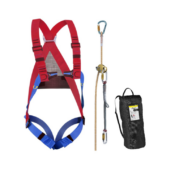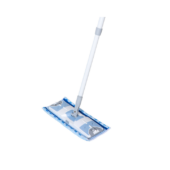Indirect procurement costs contribute significantly to the base price of business supplies and commodities. Shipping fees, transaction fees, and rack rates for minor orders raise procurement and purchasing expenses and reduce profitability.
Supply pricing is complicated, making it hard to know what you’re paying for. It may seem impossible to oversee procurement, but with the correct method and techniques, you can acquire a fair price and eliminate secondary costs.
This article discusses procure-to-pay (P2P) cycle components and costs. It addresses the most prevalent questions concerning reducing waste and maximising purchase contract value, such as:
- So what are procurement costs?
- Which procurement expenditures are most common?
- What are procurement cost management best practices?
- How might technology reduce procurement costs?
So what are procurement costs?
Procurement costs are the fees and extras connected with buying business supplies. Indirect spend costs can dramatically affect cash performance if not managed.
While procurement costs can’t be eliminated, professionals can minimise them through negotiation and purchasing.
Examples of procurement costs?
Several common variables make extra costs add up quickly. The following costs or a combination of them may raise your supply purchase price.
Running your procurement department incurs indirect costs. They include procurement and accounting wages, administrative charges, processing fees, and other transactional costs. While these procurement cost cutting are hard to remove, using technology to boost procurement and accounting productivity can reduce them.
Contract and negotiating fees: Complex or long-term contracts often require legal review to balance rights and duties. These legal fees are expected in the budget. Standardising contract management and leveraging internal contracts to obtain supplier relationships avoids legal review.
Transportation costs: Unless pre negotiated, transporting products from the supplier to your sites is an additional cost. Simple planning and order revisions can save transportation costs. Order in bulk to reduce unit and total shipping costs. Use local or domestic providers to save on fuel and shipping costs.
Taxes: Business taxes are unavoidable, but you may reduce their impact on your bottom line. Source materials and supplies carefully and use tax exemptions and special programmes to reduce expenses.
Custom Charges: International orders and shipping often involve customs fees. Do not let customs fees or tariffs increase your landed costs when ordering supplies or shipping manufactured items.
An inefficient accounts payable (AP) process can also increase costs:
Late fees and financial charges: Late payments incur fees. Suppliers may add penalties on your invoice balance. Automation can reduce these costly overhead costs by ensuring prompt payment.
Invoice Processing Fee: Suppliers may impose surcharges for invoice processing to cover processor costs. Avoid needless expenses by using ACH.
Rush delivery fees: Critical projects may require quick delivery. Poor planning that results in premium delivery costs wastes money. Reduce rush delivery emergencies with a good order and approval process.
Restocking Fee: Poor processes create restocking costs, another expense. Order the right goods from the right seller. This prevents defective orders and restocking fees.
Cutting procurement costs with these 5 tips
There are various approaches to boost procurement team experience and cost cutting in procurement. Automating procurement, negotiating better pricing, and examining total spend all help.
Five procurement best practices to consider when developing your practice:
- Make procurement formal: A haphazard purchase-to-pay process causes errors and extra expenses. It fosters fraud and maverick expenditure. It eliminates cost-cutting leverage in your process. A systematic procurement process with purchase order approvals and spending guidelines eliminates unauthorised or unexpected spending.
- Use scale economies: Small, recurring supply chain orders raise prices. Centralising purchasing for all locations and departments lets you take advantage of bulk discounts, lowering per-unit costs and streamlining purchasing.
- Strategize sourcing: Strategic sourcing helps in cost cutting in procurement. Strategic sourcing requires good supply chain management and supplier relationship management. It optimises price and contract performance throughout vendor lifecycle. Strong procurement strategies improve pricing and terms for every agreement. Strategic sourcing helps volume pricing by combining purchases so you buy more from fewer providers.
- Avoid and save costs: The lowest unit price doesn’t always mean the lowest total cost. Think big about spending and make smart purchases to save future costs. Instead of short-term, transactional agreements, extended warranties, replacement programmes, and multi-year contracts for critical services assist avoid future spending and conserve cash flow. Avoiding costs by lowering procurement risk and managing vendors is another method.
- Use technology to save more on procurement: Accounting software automates laborious tasks. Companies streamline the purchase requisition process, lower direct and indirect costs through leveraged buying, and improve e-procurement and accounts payable automation with technology.

















